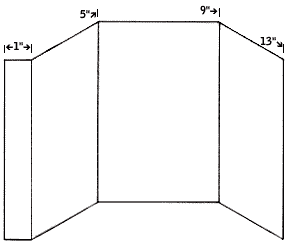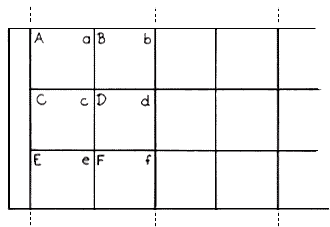The Plantation Community
Lesson Four
SCHOOLTIME
READ AND DISCUSS
When the Mason children were young, there wasn't a system of schools like we have today. Many children in middle-class and poor families, and almost all children of slaves, did not know how to read and write.
George Mason knew how important it was for his sons and daughters to get an education. So, he built a schoolhouse at Gunston Hall. He hired teachers, called tutors, from Maryland and from faraway Great Britain. Some of the other plantation owners were doing this, too.
II. The school bell rang at 6 or 7 a.m. The Masons began their lessons in reading, writing, geography, and other basic subjects. Everyone was taught in one small room, which was sparsely furnished.
The students learned the ABC's from battledores, which were small illustrated cards. Each child recited from a hornbook, which wasn't really a book at all but a piece of paper protected by a sheet of animal horn and mounted on a board. Copybooks were used to copy down the arithmetic problems assigned by the tutor. The lessons probably went on until 6 p.m., with breaks for meals and playtime. The children went to school all year long.
III. Beyond the basic subjects, education was different for boys and girls. While in their teens, three of the Mason sons continued their studies in schools away from home. John first learned mathematics and history. Then, he studied to become a merchant. The Mason daughters were trained in household skills and needlework. This education prepared them to become wives and mothers.
ACTIVITY: Make An Old-Time Battledore
What You Need: white construction or typing paper, 6 x 13 inches; scissors; No. 2 pencils; colored pencils; rulers.
1. Hold your paper lengthwise. At the top of the paper, mark these places with your ruler: 1", 5", and nine inches. Using a No. 2 pencil, draw lines down the paper at these places.
2. Fold the paper at these lines. You should have three sections, each four inches wide, and a flap one inch wide. Each of these sections is a page of your battledore.

3. Divide each of the pages into six squares. Do this by drawing lines across the paper at two and four inches. Begin drawing after the flap. The sides of each square are two inches.
4. Turn the paper over, keeping it lengthwise. Divide the section (page) at the far left into six 2" squares.
5. Using a dark colored pencil, copy over the lines of your grid. Do this for both sides of the paper. You should have a total of 24 squares.
6. Turn to the first page (next to the flap). Begin with the letter "a" and print an alphabet letter in each square. Write the letter as a capital in the top left corner of the square and in lowercase in the top right corner. Print the letters from left to right.

7. Continue the alphabet on pages two, three, and four (other side). In the 1700s, many people thought the letter "i" was the same as the letter "j" and that "u" was the same as "v." Don't include "j" and "u" in your alphabet.
8. This is the hardest part! Think of an object that starts with "a" and draw this in the "a" square. Continue until you reach "z." Only draw objects that the Mason children would have known in the 1700s. No cars, televisions, or computers!
9. Think of a title for your battledore. Write it on the cover (section next to the flap on the second side). Illustrate the cover with a colonial school scene. Write the title of the battledore on the inside of the flap.
  |


